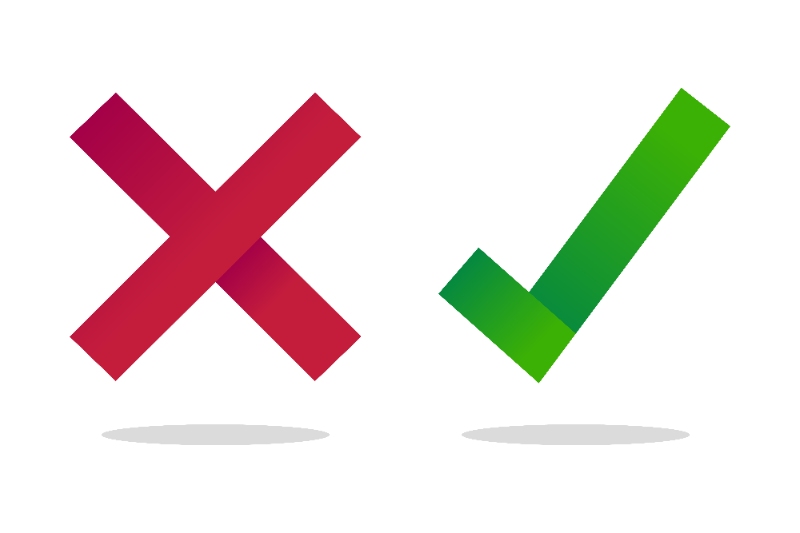We all make them.
Sales enablement can be a challenge for just about everyone. Even the most experienced sales leaders can find it hard to keep abreast of the changing needs of the market, their customers, and their internal teams, in order to design a strategy that works for all.
However, this task takes on increasing complexity for those leaders who are new to sales enablement, or to sales altogether. Many of us also struggle when we take on new challenges, such as working for startups when we've only ever worked in legacy, enterprise businesses, or when we change industries and/or domains.
When we boil it down, however, sales enablement is mostly about listening to our stakeholders, building consensus on what the most important problems are, and then finding solutions to these problems. It is, of course, much easier said than done.
I've made a lot of mistakes over the years, as have my peers and colleagues. In this post, I'm covering them all.
Mistake #1: Content Management snafus - poor version control.
In my experience, most sales misinformation can be traced back to out-of-date decks, demos, and other collateral. Content management doesn't need to involve a tool, per se, but it sure gets easier if you do! You see, when you're using common drives and share points and other forms of storage, there is no realistic way for you to ensure that every single piece of the old content is gone and/or replaced by the new one.
Why? Because you don't have a single source of truth. Everyone makes their own filing system and storage structures and there is no way to ensure that file names don't change. Also, you don't control how many copies are out there, and most of your people are carrying their own copies.
A strong content management tool gives you the ability to retire old data, en masse. Version control also becomes easier, as do access restrictions. When this is combined with strong processes and communication between product, marketing, sales, training, content, and CX teams, what you have is a strong content management strategy.
A strong content management strategy not only prevents misinformation but gives your teams a consistent voice. Moreover, it saves you from a million email flame wars (where both parties are right, according to their document).
Mistake #2: Over-engineering your tech stack.
Tools and software are great if your team uses them.
Imagine this: you're excited about a new tool that has the whole industry abuzz. You read up on all the right things and get feedback from peers and then, with your heart on your sleeve, you unveil your brand new acquisition… to stifled groans. Hey, it happens more often than we realize. The mistake: not involving the users in the purchase decision.
When you've inherited an overly complex tech stack, target tools with the lowest adoption (irrespective of how highly they're rated online). Why aren't your salespeople using them? Most likely, it takes too much time and effort and doesn't give them enough in return. The cardinal rule of software is simplicity. It needs to be incredibly easy to use, the benefit should be obvious, and it shouldn't involve new hoops for people to jump through.
If your sales reps are complaining about spending too much time capturing data, you need to explore automation. Most tools have several levels of automation, and this is an easy problem to fix. Ditto for tools that have too much lag, are too complex or error prone, buggy, or just require too much-damned input for very little output. Just make sure the user group is involved, and their feedback is taken at each step.
Also, check if your tools and processes are too much about tomorrow. For example, do you really need that extensive CRM with a million screens and a 3-week training program at this stage? What is your ROI on the 3-week training for this new system? Something to think about.
Mistake #3: Shortchanging training
Let's say you've outgrown your current tech setup and need to implement more complex tools. If you must invest in a tool that needs training, then follow the training guideline. Also, get your own training resources to do assessments within a month, to check if users are comfortable with the tool. It is also a great idea to request feedback from the technology vendor about tickets that point to a lack of understanding of functionality.
Even great tools (ones that deliver excellent value, have lots of automation, and are very streamlined) can turn into liabilities if your people aren't using them right. At the very least, it'll make it that much harder for you to recoup costs. At worst, it creates daily frustration for your teams.
Mistake #4: Stagnation
Processes stagnate, as do tools. While you don't want your sales reps spending too much of their time in review meetings, it's important to have stand-up meetings that let you take the temperature of what's working and what isn't. As a sales leader, it's always a good idea to foster a culture that values feedback and constructive criticism. Just because you've put a lot of money down on a tool or training program that no one likes shouldn't be a good enough reason to use it - and your team should know that.
Try not to get attached to your roadmaps and quarterly plans for sales enablement. Instead, try to keep an eye on what your team needs, what they're excited by and what they're struggling with. Let your sales metrics be your guide - what are the areas that are flagging? Use the data to start a conversation, and create a safe space where your team gets to interrogate the problem and not one another. Let the insights that emerge drive further actions.
Mistake #5: Letting the budget decide
This applies to all areas of sales enablement: from research agencies to training to tools to graphic designers. When you start with this filter, you'll find a few feasible options, of which, you're likely to go with the most economical one.
That's not how you find a good fit. Of course, the budget is important, but it's not the most important thing here. For instance, you could get lucky with a training partner who comes cheap, or you could spend months trying to make it work, only to have to replace this person with a vendor who was better suited to the job, from the get-go.
What if you didn't use the budget filter during research and discovery? You'd get a sense of what is on offer, and what's possible at various price points. Using that lens, you're able to choose from a wider pool, and ultimately create solutions that are much more effective.
Mistake #6: Running review meetings like Herr Dictator
We've all sat through those review meetings where someone high up in the sales organization asks uncomfortable questions about this or that aspect of sales performance. Their body language screams disappointment, their feedback is performative, and the whole thing has this air of doom. Who does this serve? Does anyone walk out of these meetings feeling gung-ho and motivated? No, then why do it?
In my experience, all this does is create friction and an atmosphere of blame. No one wants to be the guy who 'screws up', and it sets our teams up to compete in the most unhealthy ways because they're not trying to win approval, but avoid disapproval. That's not the sort of team culture that digs deep and finds root causes of problems, because they're all too busy playing a complex game of 'cover my ass'.
Honestly, I do understand the urge to turn into a fire-breathing dragon from time to time. Sometimes the results just aren't there, and it hurts. But let's remember that most of our people really are doing their best. If the results aren't forthcoming, wouldn't you rather be made aware of the true cause of the problem, than just add more pressure to an already bad situation?
Conclusion
As complex as sales enablement can be, it doesn't have to be complicated. What it does have to be, is consistent. For the most part, most of us sales leaders do have an innate sense of when things aren't going right. It's an instinct we develop over time, like a patina on an expensive watch.
So, use it. But also, lean on your mentors and your communities, and get them to share their learnings and best practices. Create your own band of trusted advisors from your sales and marketing teams. Encourage conversation. Encourage confidence.
As with all things sales, teamwork makes the dream work.




